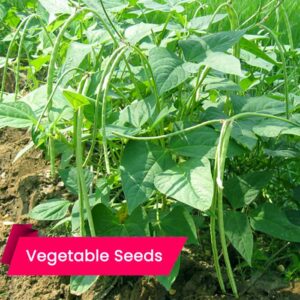
Cowpea plants are annual and can be either bushy or climbing, depending on the variety. They have compound leaves and produce clusters of flowers that give way to long pods containing seeds.
Planting:
Cowpeas are typically sown directly into the soil after the last frost. They prefer well-drained, sandy loam soil and should be spaced about 4-6 inches apart in rows. Cowpeas thrive in full sunlight. Ensure they receive at least 6-8 hours of sunlight daily for optimal growth.
These plants are relatively drought-tolerant but benefit from regular watering, especially during dry spells. Be mindful not to overwater, as they prefer slightly drier conditions. Cowpeas are moderate feeders and generally don’t require excessive fertilization. Adding organic matter to the soil before planting can provide the necessary nutrients. The time to harvest cowpeas is when the pods are well-filled but still tender. Harvesting regularly encourages continuous production.
Sow cowpeas in June for rainfed cultivation, especially after the first week. During the second crop season (rabi), from September to December, consider growing cowpeas alongside rice field bunds.
Benefits
Cowpeas are a good source of protein, fiber, and essential nutrients, including folate, iron, potassium, and vitamins. The beans can be consumed fresh or dried and are used in various culinary dishes, including soups, stews, salads, and side dishes. As legumes, cowpeas contribute to soil health by fixing nitrogen, enhancing fertility, and promoting better crop yields in subsequent plantings. Cowpeas are well-suited for intercropping and companion planting, making them a valuable addition to sustainable farming practices.
